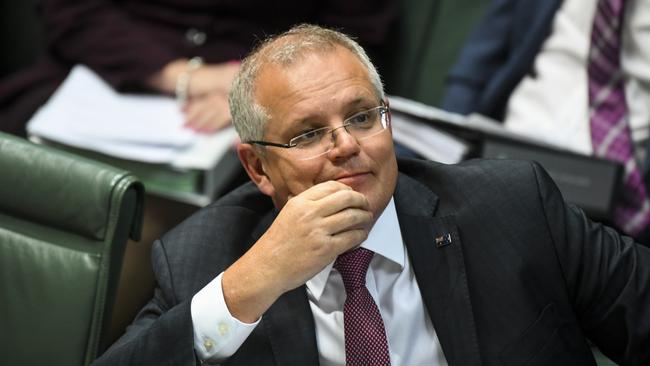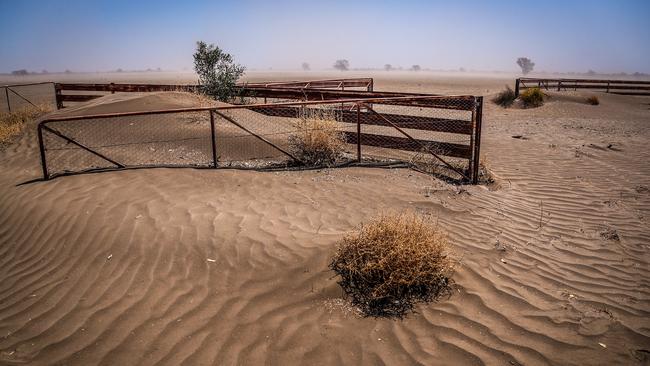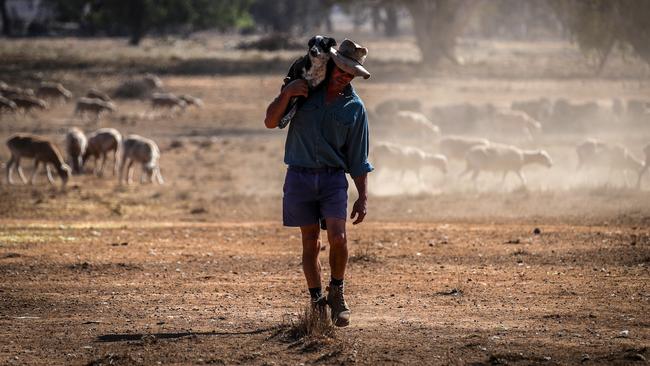John Rolfe: PM in a drought of ideas
Conditions in the bush demand some big thinking from Prime Minister Scott Morrison, which could pay dividends elsewhere, writes John Rolfe.
Opinion
Don't miss out on the headlines from Opinion. Followed categories will be added to My News.
- Drought: ‘Unlike anything I’ve seen in 50 years’
- Picture Gallery: Devastating reality of drought in NSW
- Alan Jones: Coalition goes from bad to worse on drought
The two biggest issues facing Scott Morrison right now are a lack of rain and a lack of economic growth.
A key criticism of the federal government’s response to the big dry is that not enough is being done to help farmers and rural communities right now.
Meanwhile a common attack on the Coalition’s economic management is that many of the infrastructure projects they’ve committed to aren’t “shovel-ready” and therefore aren’t able to lift the growth rate, which is at a decade low.

But by going bigger on immediate drought relief the Prime Minister could add to GDP.
It would be a win-win.
If the PM has been looking for an opportunity to be bold, this could be it.
If he hasn’t, he should be.
However, there are signs he and his team believe their problems are mainly ones of perception. This is clearly the case in relation to the drought.
More than 10 Coalition MPs, including three from urban electorates, used Tuesday’s midmorning joint party room meeting to raise concerns about how bush assistance measures were being received by the public.
The PM responded: “There is a need for urban communities and metropolitan communities who have concerns about support for drought affected communities to hear the message of what we’re doing as well.”
In other words, we need to do a better job on the sell.

He was speaking from personal experience, having just endured a bruising breakfast-time exchange with Alan Jones on 2GB.
“I don’t know where the money is, Prime Minister, I don’t know where it is,” Jones said in one of many interjections during their clash.
The PM then resumed trying to explain how the government was allocating $318 million worth of help, say more than a hundred shires were getting $1 million each.
Jones: “PM, how does that feed a cow? PM, how does that feed a cow?”
PM: “I’d like to answer you …”
Jones: “How does that feed a cow, PM?”
PM: “And I’m sure your listeners would like to know where that $300 million-plus has gone in the past year. $15 million to help them with looking after the pests and weeds on their property. There’s …”
Jones: “How does that feed a cow? How does that feed a cow?”
PM: “Alan, if you’ve got pests and weeds which are running …”
Jones: “Oh, PM, don’t talk to me. I’m a farmer’s son, you’re not.”

The Prime Minister is not used to having problems getting his message across.
He is skilled at the sell.
Not only did he win the unwinnable election, he is the first-ever marketing expert to lead our country. He should be a pro at this stuff.
I don’t reckon the issue is with the sell. It’s the substance, and a sense that we really should have been better prepared than this.
By prepared, I’m not so much thinking of the failure to give life to Tony Abbott’s 2013 vision for 100 dams, but the absence of a national drought policy.
If you ask the government, it will say it has a drought policy.
But the National Farmers Federation continues to say the government does not. That’s a stinging criticism from what should be natural allies of a Liberal-National administration.
To be completely fair, is it not entirely true.
There is a “national drought agreement”, it’s just that not everyone agrees.
That leaves some farmers mystified about the criteria being applied to the allocation of assistance.
The NFF argues there needs to be an overarching plan that focuses on resilience measures, plus mandates the assessment of effectiveness and allows for improvements when measures fall short.
It says we’ve failed as a country to find an enduring approach to managing and recovering from drought. This is why farmers and local communities continue to suffer and call on government for further relief.
A country like Australian really should have a national drought policy. And we used to.
But it fell apart in 2009, when Kevin Rudd was in The Lodge, after a Productivity Commission inquiry said support wasn’t working. The commission urged a fix.
Yet here we are, back in drought a decade on, without that having occurred.
Arguably this lack of a national drought policy makes a shock-and-awe response to the current situation all the more necessary.

Dams alone don’t cut it. As Jones told the PM “some of these farmers won’t be alive when that happens”.
Their role will be in the next big dry.
Ramping up rural assistance right now is an economic opportunity for the PM. He can stun, if not kill, two birds with one stone.
The question is, will he be bold, or will this remain a quiet government for the quiet Australians?
Thursday brought some action, but not much — lump-sum payments to farmers of as much as $13,000 when they reach the four-year limit of the Farm Household Allowance.
All up that will be a few million dollars a year.
As spring becomes summer, the heat on the government over this will also rise.
Treasury must be becoming reasonably certain they have in the bag a 2019-20 surplus greater than the $7 billion promised by Josh Frydenberg in April’s Budget.
The final outcome for 2018-19, released last month, was better than forecast.
Frydenberg and his boss probably would want to produce a bottom line that’s at least $10 billion in the black.
If they could be sure they were ahead of that trajectory it would be smart to stimulate the economy by helping rural Australia.
@rolfey
